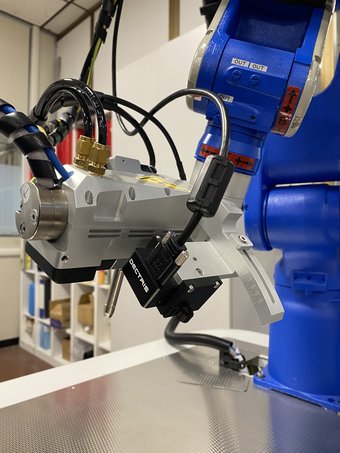Shortly after their advent, the MYTHEN microstrip detectors were recognized as a great solution for taking in-situ strain measurements at synchrotron sources, due to their high 2θ coverage, speed, and sensitivity. The excellent data generated by these large, multimodular detectors relied on the combination of features: noise-free performance, an ability to suppress fluorescence, and extremely high resolution.
However, MYTHEN’s modularity and ability to scale down were equally important for residual stress experiments. By using only two detector modules, it was possible to arrange an experimental setup that was needed for the sin2ψ method and to transfer the technology to laboratories and portable machines.
Nowadays, microstrip MYTHEN2 detectors are combined with a variety of X-ray sources (from Ti to Ag) to handle difficult residual-stress and retained-austenite measurements that require very short exposure times, sample scanning, and detection of low austenite amounts. The newest hybrid-pixel detectors offer all of that, but in two dimensions: a 2D detector in the EIGER2 product family is ready to tackle future challenges.
- Enjoy increased resolution, thanks to small strips and pixels.
- A selection of linear and area detectors covering 4-100 keV offer flexibility in data collection.
- Our detectors feature fluorescence suppression and noise-free performance.
Residual Stress Measurements at Synchrotrons
- Perform in-situ and time-resolved XRD with large angular coverage and high frame rate .
- Obtain synchronized measurements thanks to gating and triggering capabilities.
- Work in high-energy applications with CdTe-based detectors.

Most Frequently Used Products at Synchrotrons
Residual Stress Measurements in Laboratories and with Portable Machines
- Our product portfolio covers energies from Ti to Ag.
- Our compact detectors can fit even into a portable diffractometer.
- Perform sample mapping with high angular coverage, a high frame rate, and fluorescence suppression.











